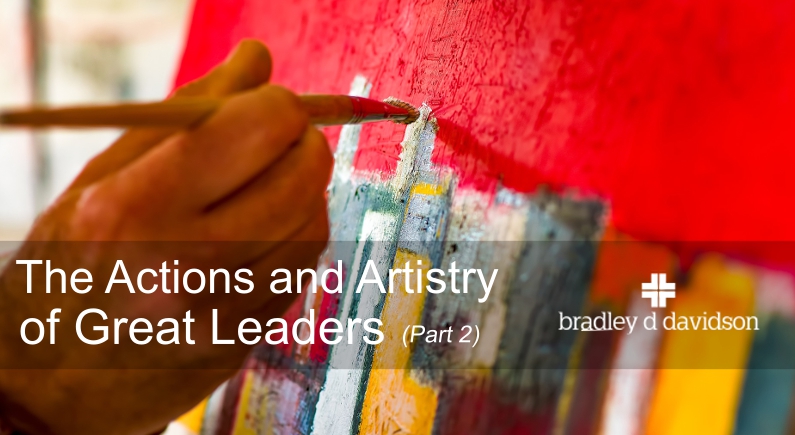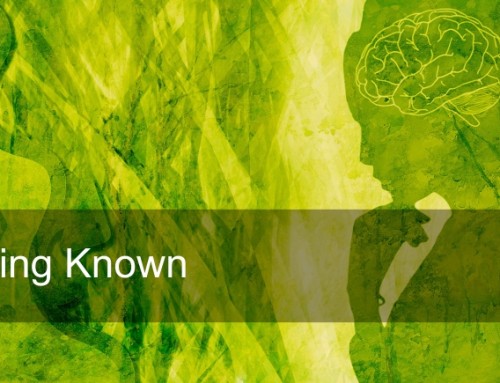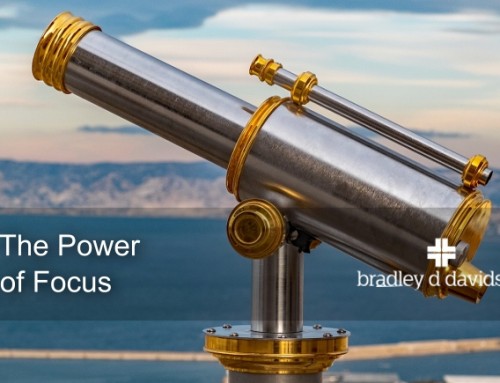oday’s post is part two of a series. As I began my first post, let me say that I understand the challenge that you may be facing. Perhaps you are a leader who has a dream for something big but, somehow, the movement towards your vision is slower than you had hoped it would be. In my last post, I shared the actions that great leaders take to inspire others to help move their vision forward. In this post, I will share the artistry of great leadership.
The Artistry of Great Leaders
So far, we have agreed that Leadership is the act of influencing a group of people to achieve a common vision bigger than themselves. Regardless of the leader or the leadership context, these words, inspired by Peter Northouse’s definition of leadership, define what actions leaders must take. You may be asking, ‘If this is the recipe for leadership, why aren’t all leaders who follow these actions successful?’ The answer lies in the ‘artistry’ of leadership. Great leaders take the actions of leadership and conduct them in their own unique, artistic way that results in a highly engaged organization that achieves its vision.
“Great leaders are great artists. The strokes of their brush are guided by a steady strength that is refined by deep care and compassion. This artistry brings their canvas to brilliant life, a reflection of their inspired vision.”
~Dr. Bradley Davidson
What is this artistic way of leadership? Great leaders lead from a place of deep care and compassion for their organizations, their followers, and their stakeholders. They do this by taking leadership actions in a way that is highly aligned with their values and strengths while considering the values and strengths of their followers. Practically anyone can exert force and wield power to achieve a short-term outcome. However, that unrefined approach often damages relationships, shifts the attention away from the vision, and results in a failure to achieve the most important, long-term outcomes. On the other hand, when a leader’s actions are guided by their values and strengths as well as a deep care for others, the followers are inspired to bring their common vision to life while feeling stronger, more valued, and more empowered. This is the artistry of great leadership.
How do we lead from this place of strength and values? And how do we enable the values and strengths of our followers to guide our leadership? Let’s explore a couple of elements that form who we are as individuals. These factors influence how we as humans respond to leadership from others. Attention to these factors within ourselves (the leader) and others (the followers) has the potential to supercharge our effectiveness at influencing in an authentic and sustainable way.
- Values. Our values represent those things in our lives that we hold close and that we find important. They are the needs we want to have met. These values are often the source of our motivation and inspiration. Scott Gregory and Amy Sarraf Renshaw, personality experts from Hogan, suggest that leaders may be more effective when they are aware of their own values and how their values compare to the values of their followers. For example, I once coached a leader who led a team who collectively valued recognition. This team needed and wanted to be recognized and appreciated for their accomplishments. However, the leader, personally, placed a low value on recognition. Whether or not he was recognized for his accomplishments was not important to this leader. This leader was perplexed about why his leadership was not resulting in a highly engaged team producing breakout results. It was partly because this leader had not realized that he and his team place a different level of value on recognition. It never occurred to him that he needed to be recognizing his team. Once he realized this, he intentionally found ways to meet the needs of his team and the team began to respond in a positive way.
- Strengths. Gallup has done extraordinary research about strengths. They define strengths as those natural talents and abilities which are practiced regularly that result in near perfect performance. Think about that. Each of us has natural talents. When we recognize those talents, regularly work on practicing and perfecting them, they can become our strengths. When we recognize our strengths and actively leverage them in how we lead, we are putting our very best to work at influencing others. Also, when we recognize the strengths of others and place them in roles and assignments that leverage their strengths, we help people thrive and we help our organization by having the right people in the right roles.
Understanding and honoring the values and strengths of both you and your team will position you as a more caring and compassionate leader, resulting in greater, more sustainable influence.
Four Steps to Leading with Effective Actions and Elegant Artistry
Whether you are an aspiring new leader or a senior organizational executive, you have the potential to be an even more influential leader. By taking and consistently applying these four steps, you will be well on your way to effectively influencing others in a more engaging and sustainable way.
- Get clear on your vision, values, and strengths. What is your dream or aspiration for your organization? What will success look like? What are your key values and strength? What values and strengths are needed to realize your vision? A certified coach can support you in this process of defining and clarifying.
- Assemble the best team. Find talented people whose skills, knowledge, abilities, and values most closely align with your vision.
- Lead from a place of values and strengths. Be authentic in your way of leading. Set clear expectations. Provide regular feedback and coaching to support your team members’ success. Remember to consider the values of your followers as you consider your leadership approach.
- Be sure you are helping your followers make the most of their strengths. Help them find ways to meaningfully contribute to what is most important to you, the organization, and your followers.
My hope is that you are inspired to intentionally live the actions and artistry of a great leader. I wish you great success as you watch your canvas come to brilliant life!








Leave A Comment